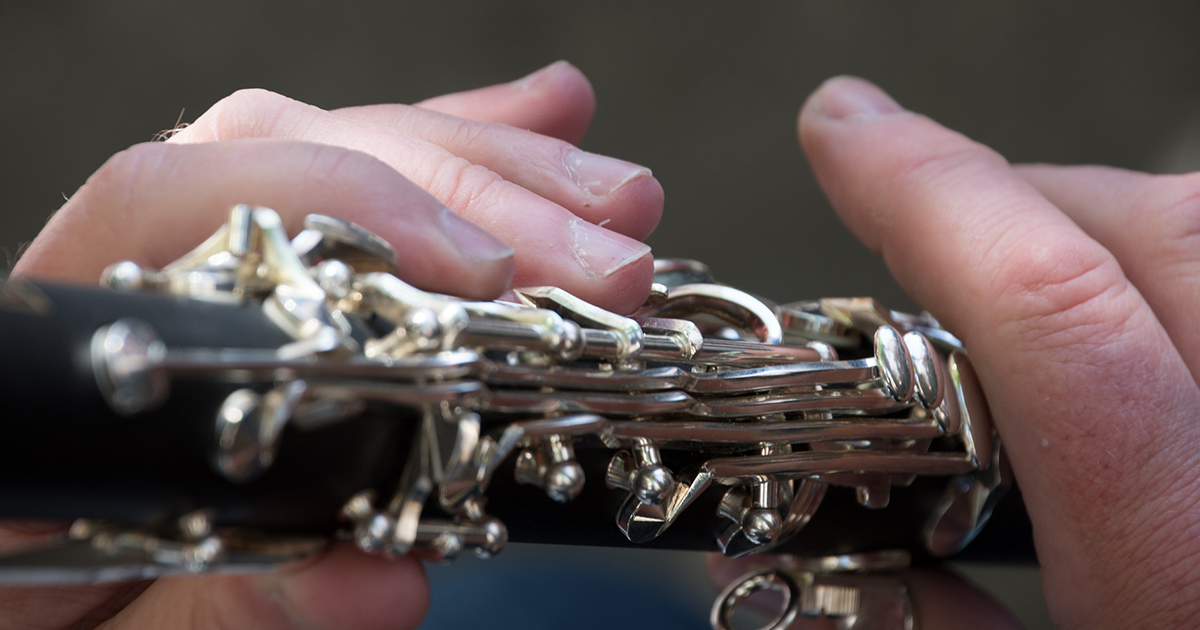An Overview on the E-Flat Clarinet
by Mitchell Estrin
Date Posted: May 17, 2018

The E-flat clarinet is a remarkable instrument. Whenever played, it becomes a musical center of attention. Its brilliant and incisive timbre, combined with the fact that so many composers have written solo passages for the instrument, has created a marvelous and specialized repertoire for the instrument. The great majority of this repertoire is in the context of the large ensemble - the symphony orchestra and wind ensemble. There are also a number of wonderful chamber pieces and solo works for the "eefer".
History
In the earliest days of clarinet history, clarinets were pitched in every key, with the exception of C-sharp and F-sharp. The early instruments were basically diatonic in nature with a few chromatic notes. Players would select an instrument based on the key of the piece they were performing. After the development of the Boehm System for the flute and the subsequent implementation on the clarinet, a full chromatic scale became possible. The clarinet in B-flat soon became the standard instrument, due to superior tonal and acoustical properties. From that time forward, composers wrote for the different pitched clarinets based on the timbre they were looking for, often with disregard to key signature. The piccolo clarinet in E-flat began earning a place in the modern large ensemble for its unique timbre and powerful upper register.
The instrument is devilishly difficult to play, as the fingerboard is very small, and the acoustical properties make achieving accurate intonation very challenging. Developing pinpoint control in the extreme upper range is also quite difficult. The instrument does not always blend well with the other wind instruments, and melodic lines are often doubled in unison or in octaves with the piccolo, flute, and regular clarinet.
Instruments vary widely from one to another and players have to be creative with fingerings to achieve accurate intonation. This is especially true in the altissimo register, where necessity truly is the mother of invention.
Where the Instrument is Used
Playing the E-flat clarinet is not for the faint of heart! There are many exposed and lengthy solos in the orchestra and wind ensemble which cannot be tentative. Every note is heard and one can never hide in the texture. I am not aware of any specific tutorials or method books for the instrument, so trial and error, along with unwavering confidence are the best strategies for success.
The instrument must be regularly practiced, and this in addition to one’s practice of the normal clarinet. Developing control and security in the high register takes time and patience. It is also important to limit practice time at the beginning and gradually work up endurance, as playing the instrument is taxing on the embouchure.
How to Practice
I suggest practicing long tones, scales, and articulation, just as one would on the regular clarinet. The Rose etudes are particularly useful at the beginning, as they require intensive listening, tonal control, and have limited altissimo passages. One must gradually increase their range upward, with an initial goal of achieving a written high G (G’’’’), concert B-flat. Ultimately, the goal should be to achieve both G-sharp and A, as composers such as Mahler, Ravel, and Shostakovich have written these notes for the instrument.
Notable Pieces
There are a select number of solo works and chamber music pieces written for the instrument. Notable examples for solo E-flat clarinet and piano are works by Easley Blackwood, William Bolcom, Ernesto Cavallini, and two sonatas by Alfred Prinz. Some important chamber music compositions that include the E-flat clarinet were composed by Paul Hindemith, Leos Janacek, Amilcare Ponchielli, Arnold Schoenberg, Virgil Thompson, and Anton Webern.
Equipment
Having excellent equipment is also paramount to success on the E-flat clarinet. Investing in a top of the line mouthpiece is very critical to progress. I favor the Vandoren BD5, B40, and M30 facings. It is also important to have sufficient resistance in the reed to be able to support execution of the highest pitches.
I have always had a great affection for the “eefer” and hope that composers will continue to expand the repertoire for this unique musical voice.
Like what you read? Leave us a comment in the comments box below.
Subscribe to the We Are Vandoren E-newsletter (WAVE) to receive 4 weekly articles for Performers, Students, and Educators